
|
Of greatest importance to the interurban lines, was the bridge's "subway deck" beneath the main roadway. Tracks descended ramps at either end of the bridge and allowed interurbans to swiftly cross the entire length while avoiding traffic problems above. Original plans called for the ramps to be located on the bridge itself, but were changed in 1916 to incorporate short subways under nearby streets. A traffic study showed the messy, if not crippling, traffic congestion that could result from a "surface approach." The east subway ramp was located on Superior Ave. just east of West 9th Street, while the west ramp was located on Detroit Ave. just past West 25th Street. The subway deck was built to accommodate six sets of tracks, but only four were ever installed. This left two "ghost lanes" on either side of the bridge which were never utilized. All four tracks descended the east ramp together, while on the west end two sets of tracks emerged onto Detroit Ave. and the other two (used by the city streetcars) turned south and emerged from a ramp on W. 25th Street. The subway deck also included passenger station platforms at either end used by the local streetcar lines. The Lake Shore Electric was prohibited from making any local stops between Public Square and Rocky River and therefore never used the platforms. Early plans were also made to use the Detroit-Superior subway deck as a link between future subways extending under Cleveland on both sides of the Cuyahoga River. The plan was made public in 1919 but was turned down by voters in 1920. Other subway proposals were made through the years into the early 1950's, but none were ever approved for construction. The Lake Shore used the Detroit-Superior bridge until the end in 1938. The Cleveland Tranist System continued using the subway deck and platforms until its own streetcar service ended. Attempts were made to convert the subway deck for automobile use but proved impractical. The ramps were covered in 1955, and few motorists today have any idea what is under the road as they drive across the bridge. Today the lower deck and platforms are occasionally opened for the public to tour. |
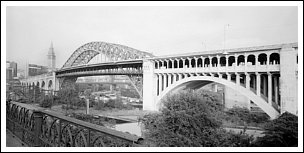
Superior Viaduct. (Library of Congress) |

(W. A. McCaleb) |
|

|
|

old Superior viaduct below. (Library of Congress) |
|
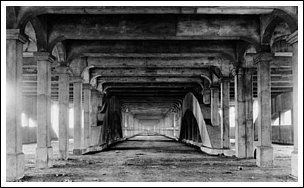
(Cleveland State University Library) |

center span. (Louis Szakacs photo) |

(Cleveland State University Library) |

(Cleveland State University Library) |

|

are visible on the left. (Cleveland State University Library) |
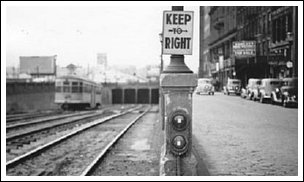
at the east ramp. (Cleveland State University Library) |

(Dennis Lamont) |

which the Detroit-Superior bridge was built to relieve. (Library of Congress) |
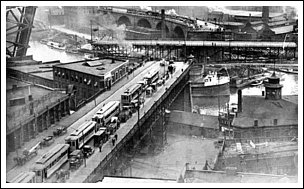
while boats pass through the Superior viaduct, June 1912. (Cleveland State University Library) |

had been used. (Cleveland State University Library) |
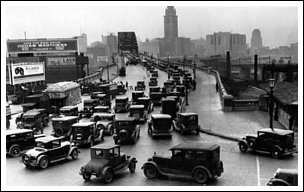
this scene from 1930. (Cleveland State University Library) |

(Library of Congress) |

remains of Superior viaduct. (Cleveland State University Library) |

|

|

(American Society of Civil Engineers) |
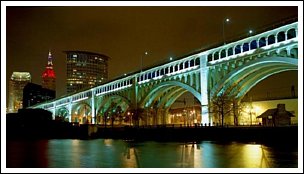
100 years of age. (Jerry Ting photo) |
|
|
|